
Now there’s a question – posed by Chris Smaje of the Ecoogical Land Co-op. Chris joined the board of the ELC as Dave of Lowimpact left, and since then Chris has produced a book called A Small Farm Future, which we review here. Members of Lowimpact have become involved in the world of mutual credit, while Chris has tried to convince us that the future of farming is mixed, organic smallholdings rather than giant industrial farms using pesticides. We think that these issues are closely related, both advocating a move to producing the things we need in communities, by small businesses, including co-ops and sole traders. In this article, Chris discusses whether small, organic farms can feed the world, and, of course, he concludes that they can. We think that this is very important. Not only can large, industrial farms not feed the world in the future, they will destroy the very soils and ecology of the only planet that we have to provide food at all. Over to Chris – see what you think.
I discuss various aspects of so-called ‘alternative’ agriculture at some length in Chapter 6 of A Small Farm Future1, and I don’t intend to retrace many of those steps here. But there’s a couple of further things I do want to say in this blog cycle. Here, I’ll focus on organic farming.
On page 125 (and also page 150) of my book I cite a 2007 study by Catherine Badgley and co-authors2, one of whom is Jahi Chappell who sometimes comments here, so I’m hoping he might weigh in with his thoughts on this post. Their paper suggests that organic agriculture based on biological fixation of nitrogen is capable of meeting global food demands without reliance on industrial synthesis of nitrogenous fertiliser (from now on in this post I’m going to use the symbols N to refer to plant-available nitrogen, BNF to refer to biological (or ‘organic’) nitrogen fixation and SNF to refer to synthetic/industrial nitrogen fixation). Interestingly, the Badgley paper also suggest that while organic yields in rich countries are typically lower than their ‘conventional’ counterparts, the opposite is often the case in poor countries, a point to which I’ll return.
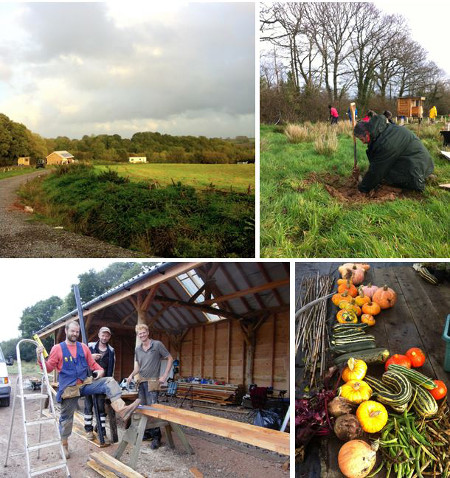
Since the publication of my book, I’ve become aware of various papers by Professor David Connor critiquing the Badgley paper, and more generally the notion that it’s feasible to feed the world without SNF. Although I identify with organic/alternative agriculture and have never used synthetic N in my own farming, I don’t take an absolutely purist line about it in relation to the global food system. If SNF is necessary in some circumstances, I’m not going to lose sleep over it. Still, SNF is an energy-intensive business requiring a complex industrial infrastructure. Given energy and other constraints in the future, if it turned out we needed SNF at similar levels to the present to feed the world this would be quite a stumbling block for arguments favouring low-energy agrarian localism. So it’s worth considering Connor’s arguments.
The main objection to the possibility of ‘feeding the world’ through organic agriculture based on BNF is that it’s typically lower yielding than SNF-based agriculture. This yield penalty has two components – lower yield acre for acre in the corresponding crops, and the fact that organic agriculture has to build N via rotations with leguminous non-food cover crops that further increase its land-take. Connor argues that the Badgley paper failed to take proper account of this second issue, and therefore overestimated the global potential of organic agriculture.
Whatever the rights or wrongs of that point, I’m going to take a different tack and consider some figures that Connor presents3. He says that 21 Mega tonnes (Mt) of N are fixed annually by cover crop legumes, with the total amount of BNF estimated between 33-46Mt. This contrasts with 113Mt of SNF, giving the measure of the challenge – apparently a major shortfall in the possibility of feeding the world organically.
But let’s take a closer look at these figures, most of which are based on a 2008 paper by David Herridge and co-authors4. I’m going to see if I can find some ways to narrow the discrepancy between BNF and SNF reported by Connor, which at worst is over a fivefold difference in favour of synthetic (113:21). It’s rather a back-of-the-envelope job, and some of the underlying issues are quite complex, so of course I’d welcome any comments or refinements.
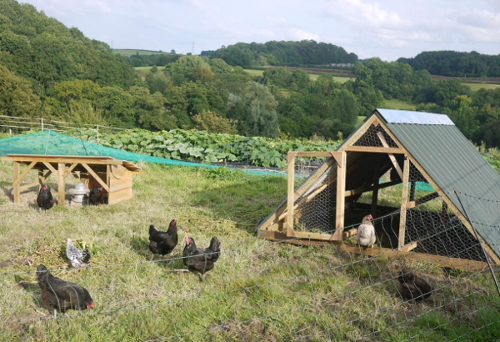
The Herridge paper that Connor draws on proposes a larger amount of global BNF than Connor of 50-70Mt, as follows:
Pasture & fodder – 12-25Mt
Rice – 5 Mt
Sugar cane – 0.5Mt
Legume cropland – 21.45Mt
Non-legume cropland – <4Mt
Extensive savanna – <14Mt
Connor’s 33-46Mt figure presumably comes from adding legume cropland to the lower and higher bounds of the pasture & fodder figures (21+12=33, 21+25=46), so he’s ignoring the other forms of BNF reported by Herridge. This seems reasonable in the case of extensive savanna, little of which is likely to find its way back into the agro-ecosystem, but not so reasonable in the case of the other, admittedly fairly minor, BNF sources – rice, sugar cane and non-legume cropland. So I propose to incorporate these into the BNF figure. This gives a range of 39-56 Mt BNF, something of an improvement on the worst-case ratio, but still at best only half the SNF figure.
Let’s now look at livestock. According to the FAO, 33% of global cropland is devoted to producing livestock fodder. This is a choice that humans make – in fact, that primarily rich humans make – and I’d suggest not a wise one in view of the energy and other squeezes we face. Therefore, I think we can drop it from our modelling. We need to design a renewable food system that can feed the global population adequately, fitting livestock into it where we can, rather than designing livestock systems to meet the demand for meat which compromise food access and renewability.
I’m not sure quite how to quantify this adjustment, however. Soy is a major fodder crop, and also an N-fixer, so possibly the proportion of global cropland devoted to producing fodder has lower SNF needs? Obviously, some of the N that’s fixed ends up in the fodder and not in the field, although some of that then ends up in manure which may be available as BNF. But I’m not sure how best to adjust for these pathways – and of course there are a lot of non-N fixing fodder crops. So for now I’m going to allocate 33% of SNF proportionately to the 33% of fodder cropland, until someone suggests a better methodology. So that’s 33% of superfluous SNF, which takes us down to 76 Mt SN.
SNF used for boosting the productivity of long-term pastures for livestock is, I’d argue, another superfluous use. I don’t have global figures for this. Rough calculations for the UK suggest that we use about 30% of our SN on pastures. I suspect the figure is much lower in most other countries. I’ll arbitrarily assume that it amounts to 3% globally – further information welcome. This would take total SNF down to 73 Mt.
The next thing to look at is human waste. Each of us excretes about 20g of N per day in urine and faeces – which amounts to a lot of N aggregated across the human population over a year. Here in the UK, we already do a pretty good job of getting this back to the fields, but at quite a high energetic cost in water treatment and transport. One of the arguments in favour of ruralization is that it’s much easier energetically to get human nutrients back into the fields when people are actually living on them (a graver threat to urbanism than many seem to appreciate, especially in relation to phosphate rather than N). Let’s assume we can get 75% of the N contained in global humanure into the fields (again, I’m open to a more refined analysis with this parameter). This shrinks annual global SN to 25 Mt.
Then there are various losses associated with international trade, processing and consumer waste, which could be vitiated in a society based on local food production. I estimate these at a rough and ready 19% on the basis of a paper by Mike Berners-Lee and colleagues5 – admittedly one with a somewhat different focus, so again I’m open to more nuanced clarification. This reduces SN to 20 Mt – about the same as BNF from legume cropland, and much less than is currently fixed by BNF overall.
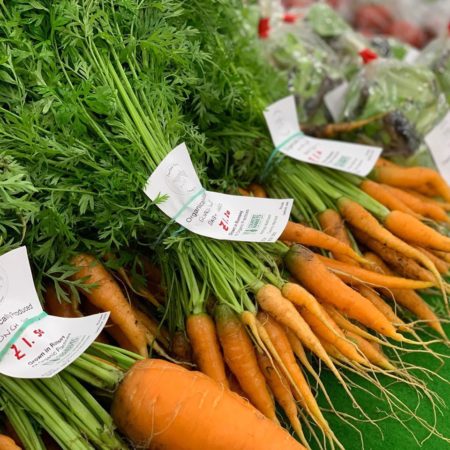
There are various other ways in which we might nibble away at this remaining SNF figure. For example, we might invest more in plant breeding and crop development to maximize edible matter per unit of N input and increase organic yields, which has scarcely been an agronomic priority in recent times. Or we might increase the N input from wild margins either directly or through livestock intermediaries, or cut back on certain kinds of N-demanding production, or improve crop production through other means like irrigation, or improve N uptake in existing crops. Maybe we could reduce SN by such means to around 10 Mt, down from the initial figure of 113 Mt. The possible fivefold excess of SN over BFN (113:21) may now be reversed (10:56) – perhaps to the extent that it’s no longer wholly implausible to imagine a low-energy small farm future that’s largely an organic one?
A final point. Professor Connor writes:
“My concern is for the resource-poor farmers, especially in Sub Saharan Africa, who overwhelmingly are targets for help and advice to apply organic methods from misguided community organizations based in other countries. Soil fertility is so low there after at least a century of intensive nutrient extraction without replacement that denial of the need for N fertilizer makes the process of agricultural renovation impossible”5
This concern seems a worthy one. If the world does still need a modicum of SNF, the people who unquestionably need it most are poor (usually small-scale) farmers in regions like Sub-Saharan Africa. Whether those advising these farmers to apply organic methods are ‘misguided’ is another matter, because there’s a long history of poor farmers getting locked into dependency on high-cost inputs like synthetic N, largely to the benefit of those selling the inputs rather than to the farmers. So the advice of movements like Zero Budget Natural Farming in India for poor farmers to farm organically without SNF seems to me well founded. The higher yields for organic farming in poor countries reported in the Badgley paper seemed to arise from the availability of extension and advice helping farmers to manage inputs more systematically. This should surely be the first option to explore in improving yields before moving on to more energy-intensive options like SNF.
But perhaps we can frame this point about nitrogen equity the other way around. Given the grossly unfair distribution of global resources, rich countries should stop trying to squeeze greater productivity out of their own farming systems through profligate (or, perhaps, any) use of SNF, and make SN available at low or no cost to poor farmers in poor countries, should the latter feel the need for it.
Notes
- Chris Smaje. 2020. A Small Farm Future. Chelsea Green.
- Catherine Badgley et al. 2007. Organic agriculture and the global food supply. Renewable Agriculture and Food Systems 22: 86-108.
- David Connor. 2018. Land required for legumes restricts the contribution of organic agriculture to global food security. Outlook on Agriculture. 47: 277-82.
- David Herridge et al. 2008. Global inputs of biological nitrogen fixation in agricultural systems. Plant and Soil. 311: 1–18.
- Mike Berners-Lee et al. Current global food production is sufficient to meet
human nutritional needs in 2050 provided there is
radical societal adaptation. Elementa: Science of the Anthropocene. 6: 52. - David Connor. 2018. Organic agriculture and food security: A decade of unreason finally implodes. Field Crops Research. 225: 128-9.
The views expressed in our blog are those of the author and not necessarily lowimpact.org's
2 Comments
-
1Malcolm Purvis June 16th, 2021
Hi Chris,
A very interesting and good article, thank you. There are a few points that I would like to make.
The World Health Organisation says that we are now growing enough food to feed 15 billion people. We waste 40% of the food we grow and a minimum of 2 million people die from overeating each year. If we could sort out our waste and over eating we would need to produce far less food, surely not beyond the wit of man? It would also be easy to argue that the death from cancers etc from pesticides/herbicides/rodenticides etc in our agricultural system should also be taken into account. We must never forget also that 70% of the worlds food is grown by small farms and although not all small farms are organic, small farms are more productive than large farms whether organic or not.
Also, NPK pellets and synthetic fertilisers are not easily taken up by plants and so much more is used than would normally be used from natural sources (https://www.growjourney.com/5-facts-synthetic-nitrogen-fertilizer/) and this leads to over use of synthetic fertilisers which then go into the water course and cause havoc with our rivers and seas particularly with algae bloom (https://cees.iupui.edu/research/algal-toxicology/bloomfactors). When you add in the fact that synthetic fertilisers only feed the plant and not the soil you have reached the situation that DEFRA minister Michael Gove stated in 2018 when he said that ‘the UK has only 30 harvests left if we don’t change our farming systems and look after our soils’.
You will also see from the ‘growjourney’ link above that synthetic fertiliser production is also a cause of both global warming and soil degradation. It is very easy to see why, when Patrick Whitefield was asked the question about ‘can organic farming feed the workd’ he stated that the question was the wrong one. He said the question is ‘can our current industrial farming and food system feed the world into the future’ and the answer is an emphatic NO!
-
2Chris Smaje June 26th, 2021
Hi Malcolm, thanks for that. Yes much to agree with in your points. Possibly I could have taken a stronger line against Connor’s grounding assumptions which ignore some of the larger contexts you point to here – and I agree with your conclusion that the current industrial food system will be unable to feed us long-term. I felt it was worth taking Connor’s analysis in its own terms and considering it from a BNF substitution point of view, but I agree that it neglects various externalities and wider contexts which we should absolutely be considering.




 Review of ‘A Small Farm Future’ by Chris Smaje
Review of ‘A Small Farm Future’ by Chris Smaje
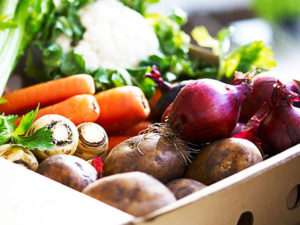 Starting a market garden: Q&A with Chris Smaje of Small Farm Future
Starting a market garden: Q&A with Chris Smaje of Small Farm Future
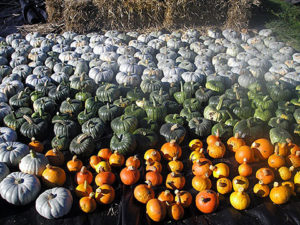 So you want to be a farmer? Thirteen words of wisdom from me to myself
So you want to be a farmer? Thirteen words of wisdom from me to myself
 Would you like to be an ecological smallholder?
Would you like to be an ecological smallholder?
 Market gardening and working horses: help co-create a new enterprise in Devon
Market gardening and working horses: help co-create a new enterprise in Devon
 Fighting our food waste habit
Fighting our food waste habit
 Organic smallholdings, not ‘farm-free’ food factories
Organic smallholdings, not ‘farm-free’ food factories
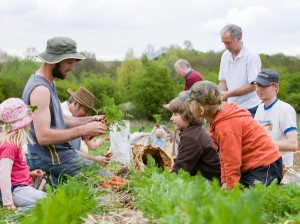 Worried about fruit & veg rationing? Let’s grow our own, in our communities
Worried about fruit & veg rationing? Let’s grow our own, in our communities
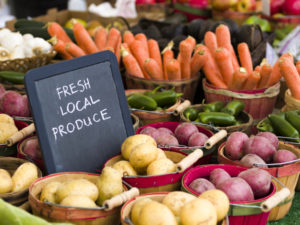 Farmers' markets / direct farm sales
Farmers' markets / direct farm sales
 Land reform
Land reform
 Low-impact food & drink
Low-impact food & drink
 Commons economy
Commons economy
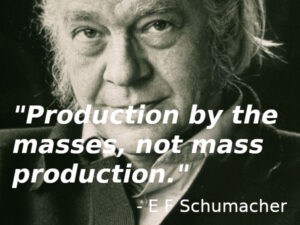 Small is beautiful
Small is beautiful
 Soil management
Soil management
 System change
System change


